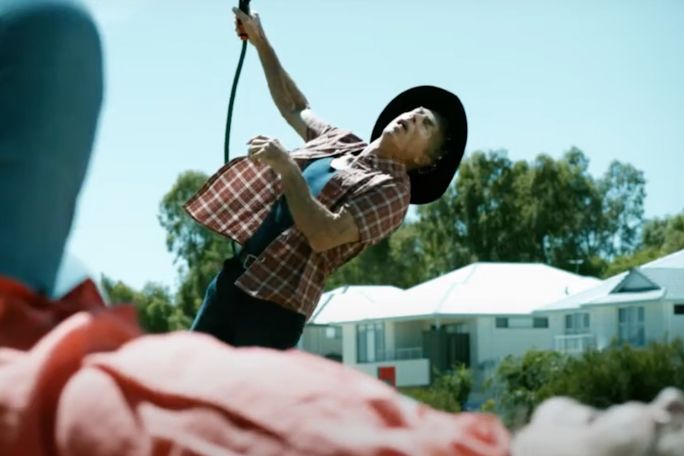Lesson summary
In this lesson, students learn about the power of status and chorus in performance. By examining Danny Green’s STOP the Coward Punch campaign, the class reflect on how high and low-status characters can be created by how a chorus responds to them. Students consider the role of real-life bystanders or upstanders in rewarding or punishing violent or aggressive behaviours, by either attributing power to individuals, or undermining it.
Learning intentions:
Students will...
- understand the concept of status and how this is demonstrated physically and dramatically, or through camera angles
- understand the role of the chorus in determining the status of lead characters
- explore the strategies and techniques of the chorus.
Success criteria:
Students can...
- analyse and reflect on how status is depicted by an actor
- workshop a performance, applying their learning to a real-life scenario
- create a performance that challenges views on violence.
Lesson guides and printables
Lesson details
Curriculum mapping
Australian curriculum content descriptions:
Years 7 & 8 Drama:
- Develop roles and characters consistent with situation, dramatic forms and performance styles to convey status, relationships and intentions (ACADRM041)
- Analyse how the elements of drama have been combined in devised and scripted drama to convey different forms, performance styles and dramatic meaning (ACADRR045)
Syllabus outcomes: DRAA4.1.2, DRAA4.3.2
General capabilities: Literacy, Personal and Social Capability
Relevant parts of Years 7 & 8 achievement standards:
They evaluate how they and others from different cultures, times and places communicate meaning and intent through drama. Students collaborate to devise, interpret and perform drama. They apply different performance styles and conventions to convey status, relationships and intentions.
This lesson is part of the wider unit of work STOP the Coward Punch: Arts – Years 7 to 10
Time required: 60 mins
Level of teacher scaffolding: A medium level of teacher scaffolding is required in this lesson. The teacher will facilitate class discussion and observe groups interacting, encouraging their creativity
Resources required
- Device capable of presenting a video to the class
Skills
This lesson is designed to build students’ competencies in the following skills:
- Communication
- Creativity
- Empathy
- Problem solving
- Collaboration
Additional info
These resources have been designed in partnership with Danny Green's STOP the Coward's Punch campaign.
Danny Green’s STOP the Coward Punch campaign was started in 2012 with the aim of raising awareness of the devastating effects of the coward punch on the community, including the physical and mental scars survivors, families and friends are left with for life.
STOP the Coward Punch believes in the right of all people to enjoy themselves, safely and free from violence. With support from entertainers, athletes, community leaders, politicians and everyday Australians, the campaign aims to raise awareness of the simple precautions we – as a community and as individuals – can take to ensure safe and enjoyable outings and, ultimately, reduce the number of coward punch occurrences in our communities.


Welcome back!
Don't have an account yet?
Log in with:
By signing up to Cool.org you consent and agree to Cool's privacy policy to
store, manage and process your personal information. To read more, please see
our privacy policy here(Opens in new tab).
Create your free Cool.org account.
Many of our resources are free, with an option to upgrade to Cool+ for premium content.
Already have an account?
Sign up with:
By signing up to Cool.org you consent and agree to Cool's privacy policy to
store, manage and process your personal information. To read more, please see
our privacy policy here(Opens in new tab).